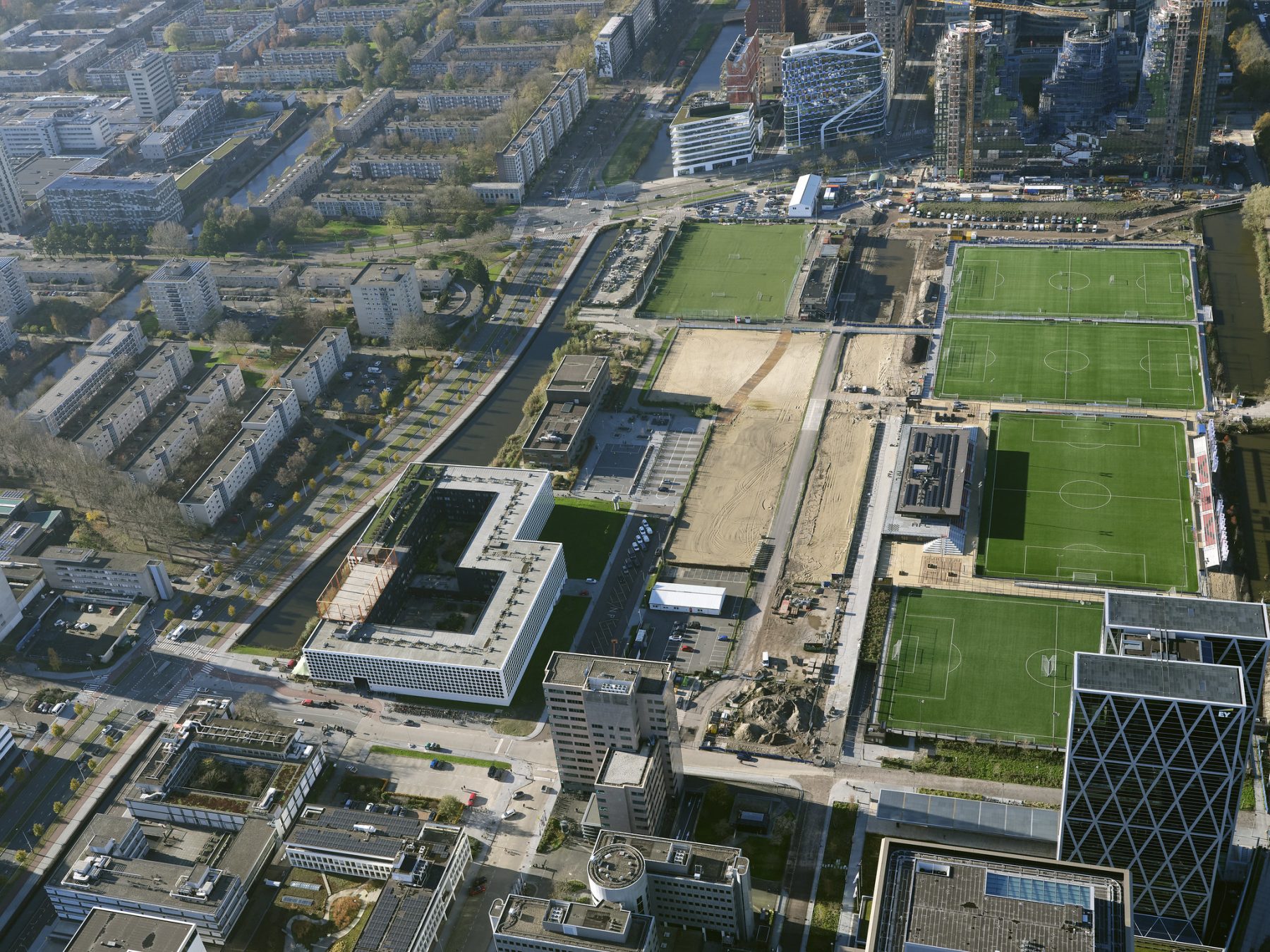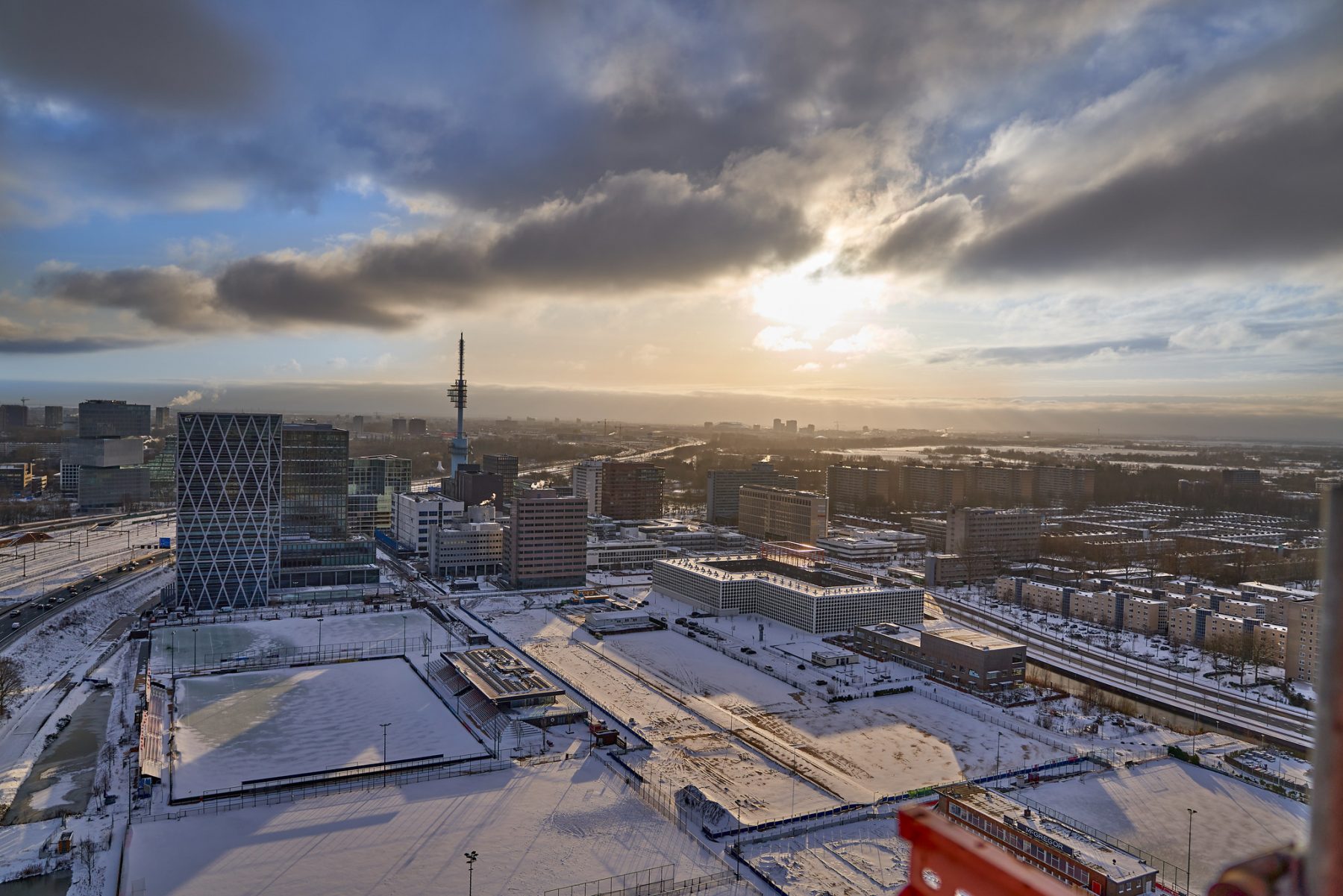The new Ravel residential district has not just appeared out of the blue. We presented a development plan (also referred to as an urban design plan) at an information meeting six years ago. The City Council approved a zoning plan in 2016. Since then, quite a lot has changed. July 2017, for example, saw the publication of the Housing Agenda 2025 (Woonagenda 2025 (pdf)). It states that every Amsterdam neighbourhood must apply a 40-40-20 ratio to construction: 40% social rental housing, 40% housing in the mid-market rental segment, and 20% private sector housing. This new policy had repercussions for building density and the height of buildings in the Ravel residential district. Over the years, there has also been an increased focus on quality of life, sustainability, and green spaces. All of this called for a new development plan (pdf) and a new zoning plan. This meant that we had further talks with businesses and residents in the area surrounding the new residential district in April and May 2020. We had one-to-one discussions with the immediate neighbours, such as AFC, Zuidas Kindercampus, and Ravel Residence (student accommodation). We informed a wider group of stakeholders at the end of April 2020. We also organised a telephone consultation.
Families and students
Community engagement manager Maarten van Ettekoven was closely involved in the process of informing the Ravel neighbours. ‘We mainly received a lot of compliments’, he says. ‘About the park-like appearance of this urban residential district, but also about how it will provide a link between the central Zuidas area and the eastern part.’ Of course, there are also questions and concerns. The questions were about the construction schedule, amenities in the neighbourhood, and the types of housing. Most people supported the need for housing aimed at households with children, but there were also questions about student accommodation. Will that also be included in the plan? ‘We’ll also be building smaller types of housing in Ravel, suitable for single-person households, and therefore also for students’, says Van Ettekoven. ‘But there will be more of a focus on student accommodation in the Innovation District, the part of Zuidas close to the Vrije Universiteit (VU Amsterdam). The Innovation District (also known as Knowledge Quarter) will be a completely new district bringing together the academic world, innovative businesses, and therefore also students and academics.’

Parking
The biggest concerns were about parking. Ravel will be a car-free neighbourhood where children can play and adults can enjoy spending time. What does that mean for parking, traffic, the delivery of supplies, and accessibility? Van Ettekoven: ‘Being car-free is something that is highly valued, but how do you have a parcel delivered? How are you supposed to move house? And for Kindercampus Zuidas, a child-friendly neighbourhood is ideal, of course, but what about collecting and dropping off children? These are all quite logical questions. We still intend to look into them. We will have time for that as we continue our work on the development plan. Of course, there are some obvious solutions, such as removable bollards, but there may be other, better ideas.’ There were also concerns about the limited number of parking spaces: 500, in two underground car parks along the future Maurice Ravellaan, in a district with 1,350 homes as well as offices and amenities. Won’t that simply create parking problems in nearby Buitenveldert? Van Ettekoven does not expect there to be any real problem. ‘The general rule tends to be: the fewer parking spaces there are, the fewer cars and better the accessibility. We also know that office staff and residents in Zuidas hardly ever park in Buitenveldert. That’s because of the restricted parking time that applies there: three hours maximum. It makes Buitenveldert unattractive as a place to park for workers and residents from Zuidas. We do know that visitors staying less than three hours like to park in Buitenveldert. That will also apply to visitors to residents and offices in Ravel and probably also for people who travel by car to watch AFC matches. But whether that will cause parking problems remains to be seen. At the moment, the areas of Buitenveldert that border on Ravel have the lowest levels of parking in the Zuid district: currently less than 59 percent of the parking spaces are occupied. We are also looking into the option of making a section of the two underground car parks accessible to the public. This is because I do anticipate some problems on Wednesday afternoons when parents come to collect their children from the Kindercampus at the same time as parents are bringing their children to football. It would be useful if the short-term parking problem could be solved by using one of the car parks. The dual usage of parking spaces is something we consider to be very important. But that will only be possible if the City manages one of the car parks in Maurice Ravellaan. We are exploring this option.’
Terraces and shops
Finally, an important recommendation that emerged from the talks with businesses, residents, and others living locally was that the neighbourhood should offer plenty of opportunity for vibrancy and activity. ‘People would particularly like to see hospitality outlets with terraces and some shops. We have taken this into account in the development plan for the neighbourhood. We especially want to offer this in the central Ravel neighbourhood square. We also intend to have a local supermarket. For more extensive shopping, people can use Gelderlandplein.’

Give your opinion